Locate Us
- Doctor's Care Polyclinic & Diagnostic Centre, 168/299, Hakim Para, Opp. Ushasi Bhawan, Jalpaiguri-735101, West Bengal, India
- +91 97359 20690 / +91 97331 48734
- info@drrajatkrbhattacharjee.com
Advanced Laparoscopic Surgery is a type of surgery that gets its name from the laparoscope, a slender tool that has a tiny video camera and light on the end. When a surgeon inserts it through a small cut into your body, they can look at a video monitor and see what’s happening inside you. Without those tools, they’d have to make a much larger opening. Thanks to special instruments, there’s less cutting, and your surgeon doesn’t have to reach into your body, either. Dr. Rajat Kumar Bhattacharjee is an well known top most surgeon in Jalpaiguri expertised in Advanced Laparoscopic Surgery in Jalpaiguri.

Compared to traditional open surgery, patients often experience less pain, a shorter recovery, and less scarring with laparoscopic surgery.

A cholecystectomy is a surgical procedure to remove your gallbladder — the small, hollow organ that stores bile for your digestive system. Gallbladder removal surgery is a common treatment for many types of gallbladder disease. This is because the downsides of having your gallbladder removed are generally fewer than those of the diseases it treats. You can live a healthy life without a gallbladder.
The operation is done the following way:
The gallbladder is then removed using the laparoscope and other instruments.
Common symptoms may include:
Symptoms usually last for short periods of time and often occurs after fatty meals which stimulate the gallbladder to contract.
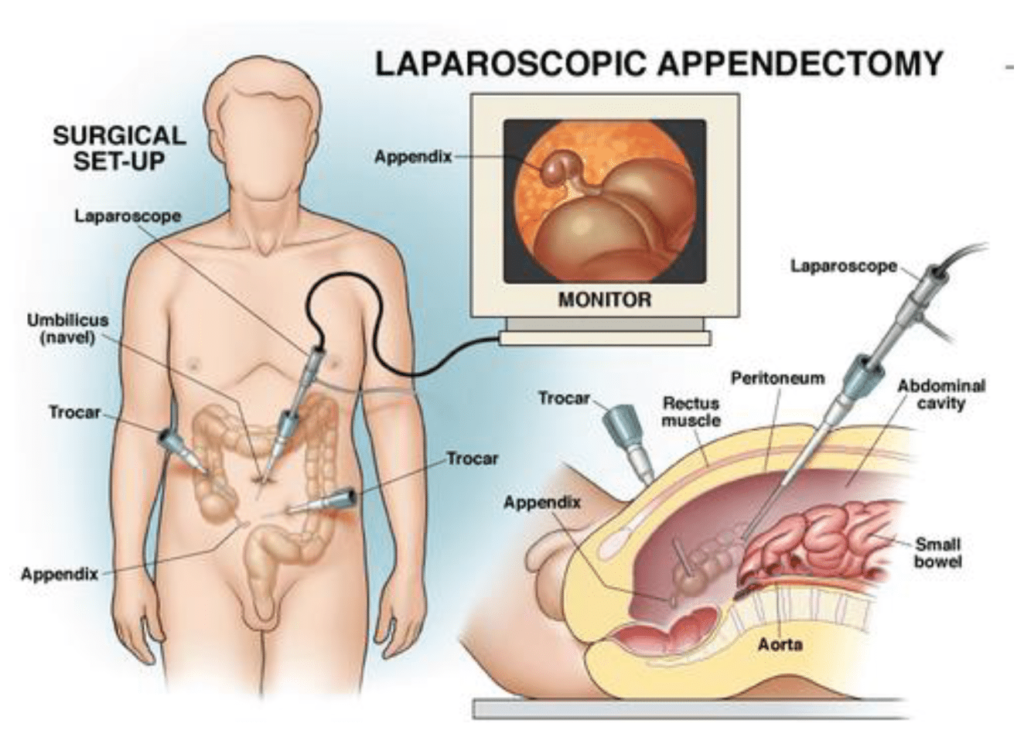
An appendectomy is a surgery to remove the appendix. It’s the main treatment for an inflamed appendix, commonly known as appendicitis.
The appendix is a small, tube-shaped pouch that’s attached to your intestines on the lower right side of your abdomen. Its exact purpose is unknown. Your body can still function without it.
It’s important to seek treatment right away if you’re having symptoms of appendicitis, such as:
If you don’t receive treatment for appendicitis, your appendix can rupture (burst).
A ruptured appendix can release bacteria and other toxins into your abdominal cavity. This can lead to a longer hospital stay and could be life threatening.

Laparoscopic cholecystectomy, also known as minimally invasive cholecystectomy, is performed through 4 small incisions with use of a camera to visualize the inside of the abdomen and long tools to remove the gallbladder. Surgery is done under anesthesia, and patients are asleep throughout the entire procedure.
Laparoscopic cholecystectomy is a safe and effective treatment for most children diagnosed with biliary disease. Although it takes longer to perform than open cholecystectomy does, it results in less postoperative narcotic use and a shorter hospital stay, as has been the case in the adult literature.

You might stay on IV fluids and nutrition at first, or you might begin with a clear liquid diet and gradually transition to a soft diet before going home. Occasionally, it can take several weeks for your stomach to start working again after surgery. In this case, you may continue to be fed through a tube or an IV.
Risks: Surgical procedures, including gastrojejunostomy, involve inherent risks like bleeding, blood clots, organ damage, and excessive internal scar tissue formation.
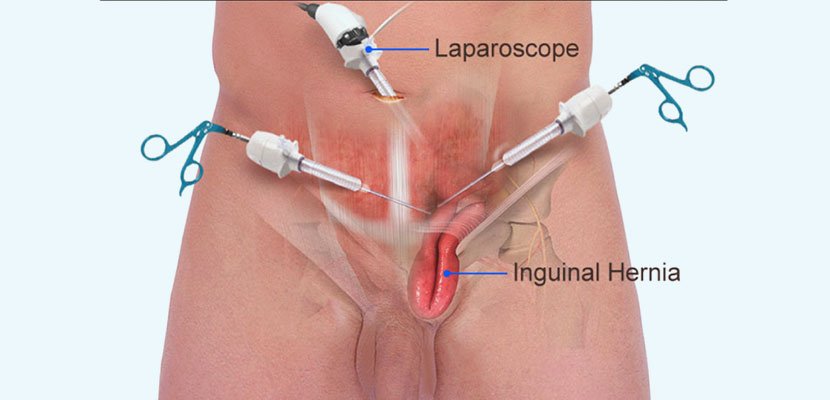
Laparoscopic hernia repair is a minimally invasive surgical technique used for repairing many types of hernias. This procedure uses three to four small incisions and a tool called a laparoscope, or a thin tube with a camera on the end, to guide the surgeon. In some cases, mesh may be used to hold the protruding tissues in place. A laparoscopic hernia repair typically takes one hour or less to complete. Dr. Rajat Kumar Bhattacharjee performs Hernia Surgery in Jalpaiguri.
Pre-procedure instructions will be explained to patients by the surgeon. It may be necessary to stop eating and drinking for at least eight hours before the procedure. Patients taking prescription drugs should ask their doctor if they should continue taking their medications as usual on the days leading up to surgery. This is because certain medications can affect the body’s ability to clot blood, which can lead to complications during and/or after surgery.
Minimally invasive, minimal incision techniques provide the following benefits to patients:
Lower risk of infection
Smaller incision size
Shorter operating room (OR) times
Earlier return to work and daily activities
Less pain and shorter recovery time for some patients
Additionally, if necessary, laparoscopic techniques allow surgeons to repair multiple hernias using the same incisions.

A. The Condition. You may have a cyst in your liver. These can be the result of an infection. The cyst is removed or destroyed with a laparoscopic hepatic cystectomy.
B. Symptoms. You may have the following symptoms:
C. Laparoscopic Hepatic Cystectomy. The surgeon will make about 3-4 small incisions in your abdomen. A port (nozzle) is inserted into one of the slits, and carbon dioxide gas inflates the abdomen. This process allows the surgeon to see inside of your abdomen more easily. A laparoscope is inserted through another port. The laparoscope looks like a telescope with a light and camera on the end so the surgeon can see inside the abdomen. Surgical instruments are placed in the other small openings and used to remove or destroy the cyst within your liver. Your surgeon will use a special instrument which cauterizes the liver as it is cut, so that there will be minimal bleeding. If a liver specimen is removed, then it is extracted from your abdomen in a plastic bag by enlarging one of the small incisions. After this has been accomplished, the carbon dioxide is released out of the abdomen through the slits, and then these sites are closed with sutures or staples, or covered with glue-like bandage and steri-strips. When you wake up, you may have a temporary drain or rubber tube exiting out of your skin.
D. Before Your Operation. Laparoscopic hepatic cystectomy usually is an elective procedure. The preoperative evaluation might include blood work, urinalysis, an abdominal ultrasound, and an abdominal CT scan. In some cases, endoscopy and/or x-rays of your bile duct may be performed. If you smoke, then you should stop immediately. If you are taking blood thinners (for example, aspirin, coumadin, or Plavix), then you will need to stop these one week prior to your procedure. Your surgeon and anesthesia provider will review your health history, medications (including blood thinners), and options for pain control.
E. Your Recovery. You usually can go home in 1 – 2 days after a laparoscopic hepatic cystectomy. You may need to wait until your bowels start working. You will be given medication for pain, and you may need to take antibiotic pills. If you have a drain, then your doctor and/or nurse will instruct you in the care for the drain. You should limit your activity to light lifting (no more than 15 lb) for one month.

A gynecologic laparoscopy is a procedure for some tests and treatments. Small cuts (incisions) are made in the belly (abdomen). Then, a slime telescope (laparoscope) is used to see inside the body. Some conditions that may be found (detected) or treated are:
Any tissue from the biopsy or a removed cyst will be tested. You will be contacted with the results. This may take up to 2 weeks.
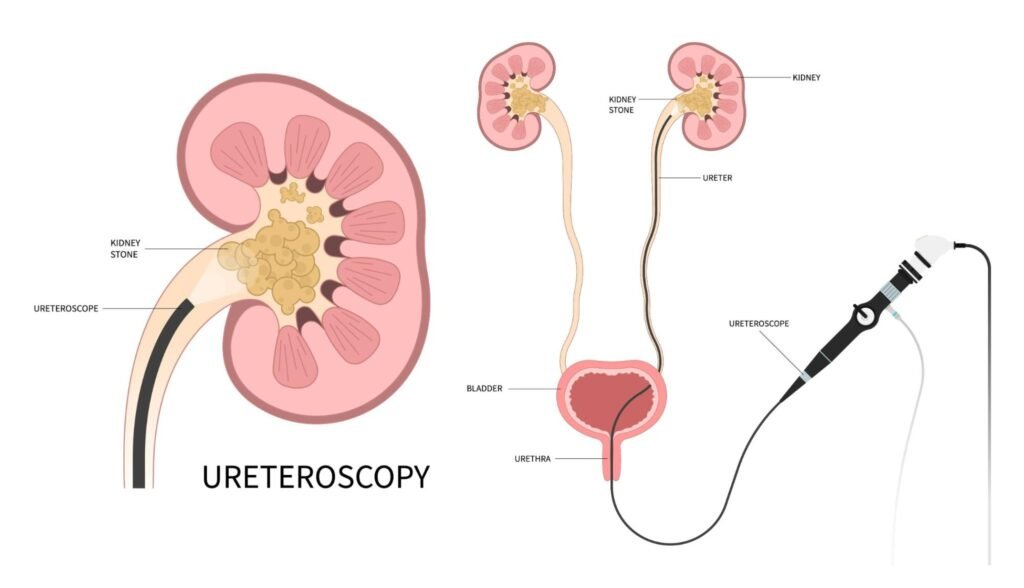
Many people in Jalpaiguri suffer from kidney stones. Renal lithiasis, also known as kidney stones, are small, hard mineral deposits in your kidneys. The stones are created from acid salts and minerals. They can harm any part of your urinary tract from the kidneys to your bladder.
If stones get lodged in the urinary tract or cause problems, then you might need surgery. However, surgery does not mean that you must spend many days in the hospital or go through a lot of pain.
You can choose a minimally invasive surgery like laparoscopic surgery. So, consult your laparoscopic surgeon in Jalpaiguri to remove the existing kidney stones and get suggestions on preventing them from recurring.
Now let us get more into details about kidney stones and how laparoscopic surgery can help.
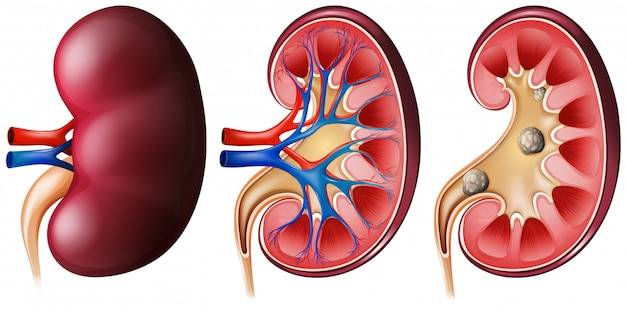
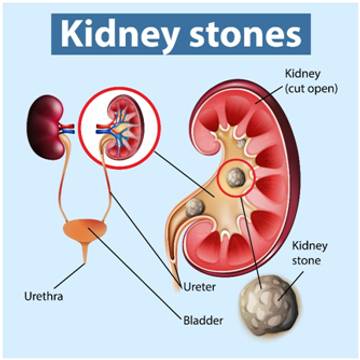
A kidney stone may or may not cause any symptoms till it has moved into the ureteral tube linking the bladder and kidney. The signs happening at this point involve:
The cause of kidney stone formation is unknown. However, research shows that stones are the outcome of mineral supersaturation and crystallization inside the urine.
Age, environment, diet, heredity, sex, metabolic diseases, and urinary infection are probably included in the stone formation. The primary causes involve:
The keyhole or laparoscopy procedure is done for kidney stones that cannot be treated using laser and endoscopy. It is better for people receiving or taking anti-coagulation (blood thinning agents) therapy to go for laparoscopic kidney stone removal. We have mentioned below how the procedure for laparoscopic surgery for kidney will be conducted:
Laparoscopic surgery is done under general anaesthesia and will need a hospital stay for two-three days. Your specialist will create about three or four small 5mm -10mm incisions on your abdomen to expose and take out the stones.
An internal fine plastic tube known as a stent is placed in the urine tract following the procedure and removed after one-two week.
As it is likely to be a pre-planned operation so you must take plenty of time talking about it with your doctor. Some of the advantages of going for laparoscopic surgery for kidney stone removal include:
Kidney stones can be extremely painful. If you have kidney stones, you should see a doctor before they become a life-threatening issue. Kidney stones can be removed with a combination of lifestyle changes and drugs.
If the problem has progressed past the point where medicine will help, laparoscopic surgery is the best option for rapid relief.

Assistant Professor , Surgery Dept., Jalpaiguri Govt. Medical College & Hospital
M.S. (General Surgery), IPGME&R, Kolkata
FMAS, FIAGES, FAIS, EFIAGES, FALS, FAGIE
Passed General Surgery, M.S. course from IPGME&R, Kolkata on 2002